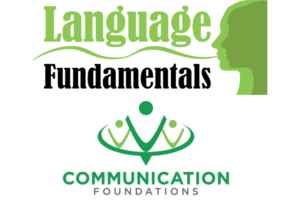As your child’s speech and language skills begin to develop, it is important to understand your child’s current level of communication and provide appropriate support to facilitate growth and language development. If your child is already receiving early intervention services, you are concerned about your child’s development, or are simply looking to provide extra support across daily routines here are a few strategies you incorporate throughout your child’s day.
Increase statements, decrease questions
It is important for your child to hear and use language spontaneously. Often times, it is very easy to continuously ask questions all day. However, this limits your child’s use of language if they are constantly being quizzed and asked questions. Instead, try to be more mindful about increasing the number of statements you ask and decreasing number of questions you ask, as this will provide direct verbal models for your child to learn and imitate.
Verbal routines
Verbal routines are words that become predictable because they are said the same way, in the same activity repeatedly. Using verbal routines over and over allows for predictability for your child to learn language with a limited set of words. As you use these routines, slowly begin to omit the last word and see if they can fill in the blank. Examples, “Ready, set, go!” “1,2,3!”
Self-talk
This is a great strategy to help increase language and provide new vocabulary. Self-talk is when you talk about what you are doing, seeing, eating, touching, or thinking when your child is present. You can easily incorporate this into your daily routines, using short and simple language, making sure you meet your child at their current level of communication.
Parallel-talk
Narrate what your child is doing. Talk about what they are touching, seeing, feeling, smelling, and hearing. This is similar to self-talk, but instead of narrating what you are doing, narrate what your child is doing. For this strategy, it is important to narrate activities that are interesting to your child in that moment to help gain their attention. This strategy is child directed so remember to follow their lead! You are simply modeling language, not asking questions.
Caregivers can implement these simple strategies to guide children through their developmental phases and promote more communication opportunities. It is helpful to be down on the floor and increase face to face time with your child to provide them increased opportunities for communication. Try to incorporate some of these tips throughout your daily routines to help your child meet their speech/language milestones.
Communication Temptations
A communication temptation is when you set up the environment in a way that entices your child to a make a request. Sometimes a child may need a motivating opportunity to help them communicate and initiate. We can set up the environment in way that will encourage them to make a request that will result in a reward. This gives the child a chance to be the initiator of communication, rather than the responder.
A simple example of this can be done through play with bubbles. Simply hand your child bubbles with the lid twisted closed so they are unable to open it themselves. Wait until they communicate that they need help. Blow the bubbles and put the lid back on, and wait for them to communicate again. Repeat this process, but be receptive to the level of communication your child is at to ensure it is rewarding.
Choices
Giving choices is a helpful strategy you can use throughout your daily routines to increase language. By providing choices your giving the child a model of language they can use to imitate, as well as the opportunity to point, gesture, or verbalize their wants/needs. Giving choices allows a child to have a feeling of independence through controlling the environment. Remember to both show and say the choice simultaneously and hold two items in each hand for visual and verbal aids.
Remember to keep communication moments fun and engaging!
About the Author:
Jacqueline Banks, CCC-SLP is an Early Intervention Speech Language Pathologist with SLP Communication Foundations. Jacqueline is a graduate of The State University of New York College at Oneonta and M.S. in Speech-Language Pathology from Sacred Heart University. Jacqueline provides Early Intervention Speech Therapy Services to children ages 0-3 in Westchester County.



